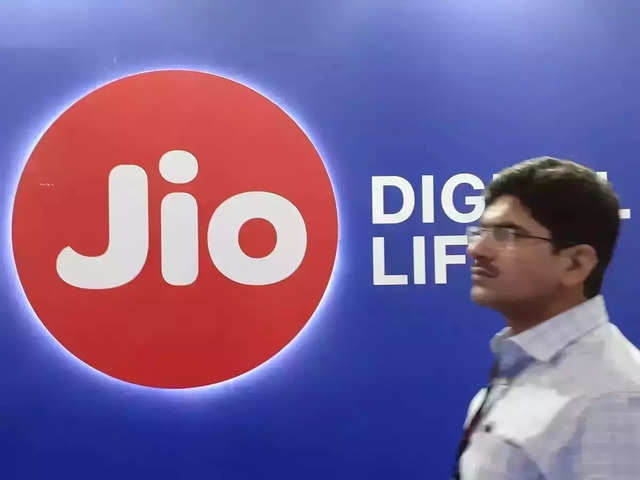
<p>We want to be the one-stop-shop for kids entertainment: Nina Elavia Jaipuria of Viacom18<br></p>
Nickelodeon is unveiling a fun new show called ‘Chikoo aur Bunty’ based on sibling rivalry
Oct 13, 2021, 10:00 IST
media
We want to build an overall kids ecosystem where we’re able to engage and entertain holistically and responsibly: Nina Elavia Jaipuria of Viacom18
Oct 13, 2021, 10:00 IST
Nickelodeon is unveiling a fun new show called ‘Chikoo aur Bunty’ based on sibling rivalry
- Before COVID, summer and winter vacations were the most important period of the year for kids’ TV channels. However, after COVID, kids have been home for a year and a half and are turning to TV and OTT channels to entertain themselves from the safety of their homes.
- Category leader
Nickelodeon has stayed on the number one rank in the kid's entertainment space for seven consecutive years and Sonic has reached number two from number seven in three years. - Now, to celebrate its 11th year of existence, Nickelodeon is unveiling a fun new show called ‘
Chikoo aur Bunty ’ based on sibling rivalry. - We talk to
Nina Elavia Jaipuria , Head, Hindi Mass Entertainment and Kids TV Network, Viacom18 about cluster’s content library, growth of local content in television, change in viewership patterns and her vision forkids entertainment genre.
Telling us why the channel chose October to schedule its launch, Nina Elavia Jaipuria, Head, Hindi Mass Entertainment and Kids TV Network, Viacom18 said, “I think that it's always a good time to deliver new content in the quarters that are very busy from a festival perspective. So, kids are at home, they have a vacation from even online schooling and have more time on their hands. And in the festive quarter, we've always realised that partners and advertisers are also looking to advertise that much more on the genre. And so it's a great marriage of viewership and revenue that that makes us go after this particular quarter, where it's Diwali and Christmas time, kids are having fun, and they're actually watching so much more than they'd love to check out a new show from their favourite franchise.”
Nickelodeon is going all out to promote its new show and has pivoted its media plans outside of TV with digital getting the lion’s share. It is advertising across OTT apps, including Disney+ Hotstar during the IPL playoffs. It is launching AR filters, GIF packs and stickers to be a part of daily conversations. Nickelodeon has also partnered with Belgian Waffles, Smoking Joe’s and New York Burrito Company to offer a specially curated Chikoo and Bunty meal.

Finding strength in home-grown content
The 2-14 year age group forms the universe for kids broadcasters. A mix of local shows and international cartoons are aired daily to keep kids glued in front of the television. However, in the last five years, home-grown content has grown tremendously and is dominating the category. 8 out of top 20 animated characters are from the Nickelodeon franchise and only 2 of them are syndicated.

The kids category in India was shaped by Cartoon Network in the 90s as it was the first channel to be launched in the genre in 1995. Since then, the genre has seen about 12-15 players catering to pre-schoolers and tweens. Cartoon Network occupied the majority of the market with its international content for a long time, post that, its sister channel Pogo climbed the top with its local hero, Chhota Bheem. Then came Turner, followed by Nickelodeon which took over with its local content and a few international shows eight years ago. Since then, it has focused on launching one home-grown IP each year to maintain its leadership position and expand its presence further by localising its content. Currently, its home-grown content of 10 IPs drives the majority of viewership on the category.

Jaipuria said, “The Nickelodeon franchise and what we deliver to children, at least on Nick and Sonic, is all almost local except for Ninja Hatodi, which is syndicated content. We really are not playing any other international content on the channel outside of Ninja. Local has also grown in its own way. As you create local, you have to keep in mind the dynamic target audience that you have. And you have to therefore write stories accordingly, contemporize, take care of the look and feel and fashion, apparel, and music. The overall local content has evolved over the years.”
The kids genre has been growing year-on-year too, despite COVID-19, channel segmentation and other new channel launches. During the lockdown(s), with no friends, no playgrounds -- kids weren't even allowed to step out. In such a scenario, TV and OTT entertainment channels acted as their escape and respite. Egro, kids’ entertainment category has also seen more interest from new advertisers across categories.
“We are a mass channel as we enjoy 7% of the total viewership. In the pandemic, particularly where TV has been the primary screen of entertainment for families, co-viewership is actually making the genre even more attractive. We have kids and non-kid advertisers on the channel. We have partners who have been with us for several years, and new partners on board as well. So, we have a good mix of advertisers who are looking to even not just talk to kids who are in-house consultants, they influence almost every other household decision and purchase, but they're also now looking at families and parents, who are actually watching with their children. And therefore you see lots of FMCG brands on the channel. And we've seen right from handwash, and sanitization to cosmetics to Britannia and, Parle and BYJUs, Amazon, Flipkart. So there is this whole robust co-viewership that Nickelodeon as a franchisee enjoys. And that is why you have advertisers who are targeting both kids as well as families,” shared Jaipuria.
Co-viewership on the genre has been very crucial from both advertising and viewership points of view. It has been growing consistently, as more and more parents are keen on becoming friends with their kids.
Viewership patterns and vision for the cluster
The Nickelodeon cluster with three channels (Nick Jr, Nickelodeon and Sonic) grabs 33% of the kids market share. It also has the maximum share in kids ad revenue pie, with a strong 35% lead. It is the network’s robust library with 700+ hours of content that has helped it stay ahead of the curve and consistent with its performance.
Due to COVID, the overall television viewership saw a hike. Nickelodeon also witnessed a similar trend. However, as schools open up for kids above 7th grade across the country now, the viewership is likely to go down.
Telling us how the viewership might change, Jaipuria said, “It grew at a very robust percentage of almost 39-40% during the lockdown and we have seen a decline of about 10% as of now, but I think at some point it will stabilise and I do feel that it will stabilise slightly above the pre-COVID level. So, we may not go back to the pre-covid level but we will obviously not stay at this very high level of 40% also, that's very unnatural and cannot happen as things open up and as the remote move from person to person in the household. But it will continue to be a very mass genre and I think it will stabilise above the pre-COVID-19 level.”
With 11 homegrown IPs, Nickelodeon will now focus on reaching out to its viewers at multiple touchpoints and continue building a content library that caters to India’s diverse needs.
“From a kids entertainment perspective, the vision is to ensure that we continue to custom-make and tailor-make content for kids in the country. The vision is to make sure that we continue to curate and conceptualise content that has great potential, which is either relatable, identifiable or has the ability to transport kids it into a imaginary world. I think the vision is to create content, which is agnostic, so that we can cater to their entertainment needs and preferences across any device that they choose to actually consume us. So I think the vision is to create an ecosystem -- a very dynamic evolved engagement ecosystem as an entertainer, where we not only engage them on television, but we are there with them on social media, Ott and we're able to engage with them and give them the ability to play with the characters at various levels, which is in terms of gaming in terms of challenges, DIY, short form long form. So we want to be the one stop shop for entertainment. We want to be an overall kids ecosystem where we are able to engage and entertain with them holistically and responsibly,” shared Jaipuria on a final note.
INSIDER INTELLIGENCE REPORTS







